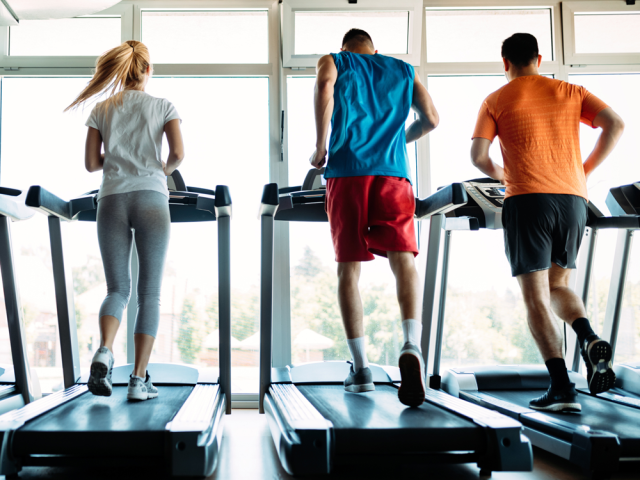According to scientists, Brits consume, on average, 6,000 calories on Christmas Day alone.
So, in an experiment published last year in the British Medical Journal, U.K. researchers explored whether providing people with the amount of exercise required to burn off the calories in, say, a single piece of mincemeat pie (21 minutes of running) or one small Christmas pudding (a staggering 110-minute run) would help prevent weight gain over the holidays.
In fact, they found participants in the “brief intervention” group exposed to this new kind of food labelling ended the holidays weighing 0.5 kg less, on average, than a comparison group.
Now, in a new review and analysis that pooled data from 14 randomized controlled trials, some of the same collaborators are reporting that when labeling known as PACE — physical activity calorie equivalent — is displayed on menu items, people consume, on average, 65 fewer calories per meal compared with other types of labeling, or no labeling.
It may not sound like much. However, the average person eats three meals a day, plus two snacks — five separate eating occasions where PACE might nudge people to reduce their total calorie intake by 200 to 250 calories a day, said Amanda Daley, of the School of Sport, Exercise and Health Sciences at Loughborough University.
“In the U.K., the guidance is that if you want to lose weight then you should look for a deficit of 500 calories per day, so already you could see how PACE could cut into that 500 calories,” she said.
The Royal Society for Public Health in the U.K. is already calling for PACE labeling on the front of food packaging.
But not everyone is so enthralled. Some worry it could lead to an exercise/eating disorder nightmare. “We know that many people with eating disorders struggle with excessive exercising, so being told exactly how much exercise it would take to burn off particular foods risks exacerbating their symptoms,” Tom Quinn, of the eating disorders charity Beat, told the BBC.
“Quite honestly, we have as a society, over quite a long time really, only focused on exercise as a means to manage weight or burn calories when it is poor at both,” said obesity specialist Dr. Yoni Freedhoff, an associate professor of family medicine at the University of Ottawa.
One advantage around PACE is that it tells people what it takes to burn that muffin or that Frappuccino
Freedhoff’s issue with the idea of putting exercise calorie counts on food packaging is that it would reinforce those messages, as well as the notion that exercise earns people the right to eat “crappy foods.” (In a related tweet, he also worried it could reinforce weight bias by suggesting people struggling with obesity are “lazy gluttons.”)
The idea that some “magical set of instructions” will lead everybody to make healthier choices is, well, magical thinking, he said, when the wider problem is the constant provision of junk food at every turn.
“And if you discourage the consumption of junk food and simultaneously discourage people from exercising, I don’t think that’s a public health win,” Freedhoff said.
Daley, however, argues that traditional nutritional labeling is difficult for the public to grasp and doesn’t provide any context or meaning. Many people don’t understand the meanings of calories or grams of fat in terms of energy balance, she and her coauthors wrote, and studies show the public consistently underestimates the number of calories in food. “Just putting numbers on a packet really has no relevance,” Daley said.
“One advantage around PACE is that it tells people what it takes to burn that muffin or that Frappuccino,” she said. It could help people decide whether the calories are “worth it.”

Some festive examples include: one thick slice of roast turkey (roughly 100 calories) would require 16 minutes of walking, three large roast potatoes (161 calories) 27 minutes of walking and one small Christmas pudding (1,280 calories) 110 minutes of running.
According to the formula, 100 calories is about 10 minutes of running and 20 minutes of walking for an 80kg man (the average weight for a man).
Daley said there is no evidence to date that physical activity campaigns lead to unhealthy or disordered eating. Obesity is related to cancer deaths, cardiovascular deaths and stroke, among other killers. “We’re interested in trying to save lives from those diseases,” she said.
Ultimately the researchers would like PACE to be seen on labels in supermarkets, on packages, and particularly on menus in restaurants and fast food outlets. “All those types of places where we eat high-calorie foods would be a really good place to start.”
There are some caveats: Most of the studies Daley and colleagues analyzed were small, and based on lab settings or “hypothetical meal selection scenarios,” not real life ones.
• Email: skirkey@postmedia.com | Twitter: sharon_kirkey


